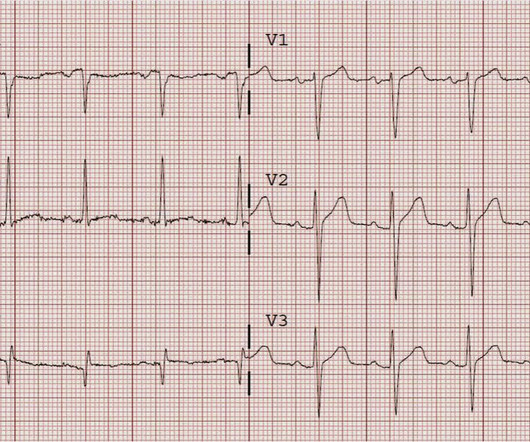Transient STEMI, serial ECGs prehospital to hospital, all troponins negative (less than 0.04 ng/ml)
Dr. Smith's ECG Blog
JUNE 18, 2011
This rules out pericarditis, which essentially never has reciprocal ST depression. When flow is restored, wall motion may completely recover so that echocardiogram does not detect the previous ischemia. This is not pericarditis because: a. Pericarditis does not have reciprocal depression.












Let's personalize your content